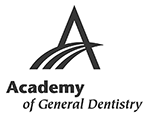Should You Get Dental Veneers?
August 14th, 2019

Dental veneers are a popular treatment to improve the appearance of your smile. Dr. Max Mosslehi and our team want to help you understand whether this dental option is right for you.
Veneers, also known as laminates, are custom-made shells that cover the front of your teeth. They can change the color, size, or length of each individual tooth. The process can require between one and three trips to our Tustin office to complete.
This treatment is usually done for people who want to change the appearance of their smile: they can get rid of stains, gaps, or chips. Here at Max Mosslehi, DMD, Inc., we know how getting veneers can dramatically change your smile and help improve your confidence.
Your initial appointment entails preparing the teeth and creating an impression. The impression will help us design each veneer to the exact shape and color you desire. You’ll come back in a week or two to have the veneers placed. Your veneers should last about ten years, as long as you practice proper care and hygiene.
There are plenty of benefits to getting veneers, but you should be aware of the potential downsides of this procedure. This process is irreversible and the veneers cannot usually be fixed. If they chip or crack, they’ll need to be replaced.
It is also possible for veneers to fall off due to excessive pressure from nail biting or chewing on ice. If you grind your teeth a lot, you’re more likely to expose your veneers to damage, which can be costly to repair.
In order to know whether veneers are right for you, schedule an appointment at our Tustin office for a consultation. We can decide what you’re looking to do with your smile and if this is the best option for you.











 Website Powered by Sesame 24-7™
Website Powered by Sesame 24-7™